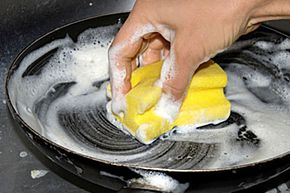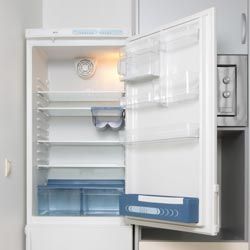Think fast: What's the most germ-infested room in the house? If you guessed the bathroom, you're wrong. The kitchen earns the distinction, largely because of the sponges we use to clean our dishes and countertops.
Sponges are excellent at absorbing and retaining liquid, which is great for cleaning kitchen surfaces and soaking up spills, but those same properties can also be problematic when it comes to germ control. When a wet sponge sits, harmful bacteria can multiply, and when you go to wash your dishes and counters, you could be spreading around dangerous pathogens. When you use a sponge to clean up food waste, the sponge accumulates microorganisms and stores them in its little nooks and crannies -- which is why the U.S. Department of Agriculture (USDA) reports that using old sponges can lead to food-borne illness.
Advertisement
"A sponge that's been in use for no more than two or three days in a kitchen will harbor millions of bacteria,'' explained Elizabeth Scott, co-director of Simmons College's Center for Hygiene and Health in the Home in a recent New York Times article. That can be a serious problem if you happen to pick up salmonella or E. coli with your sponge, because any time you use that sponge, you could potentially disperse dangerous bacteria around the kitchen.
Reading this might make you want to order takeout or go to a restaurant just to avoid the kitchen sink, but that isn't the solution. People have been preparing food for eons without poisoning themselves and their loved ones, and there's no reason you shouldn't be able to as well. You don't even need to toss those kitchen sponges, as long as you can clean them properly.
Keep reading to learn what types of bacteria are hiding in your sponge and what you can do to fight them.
Advertisement


